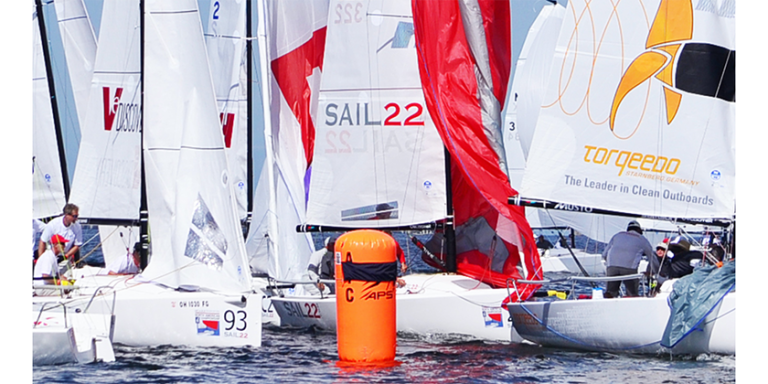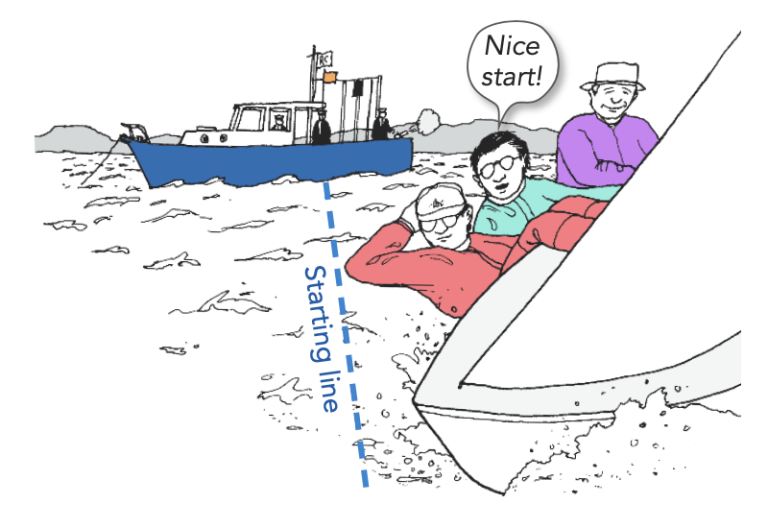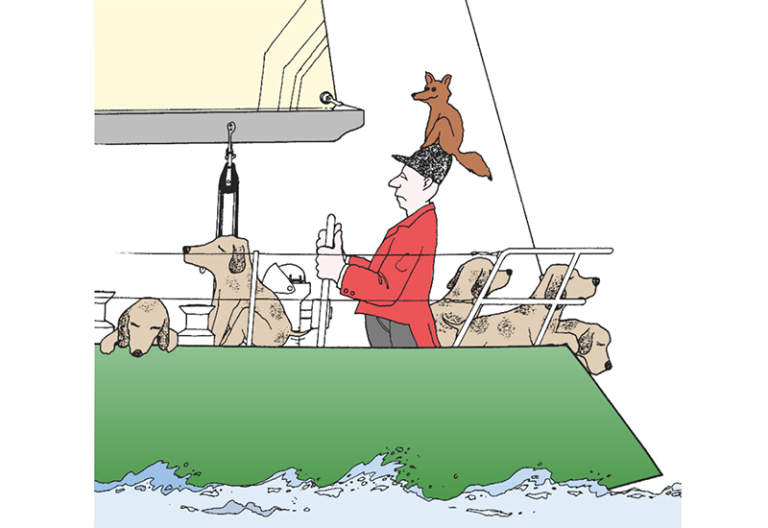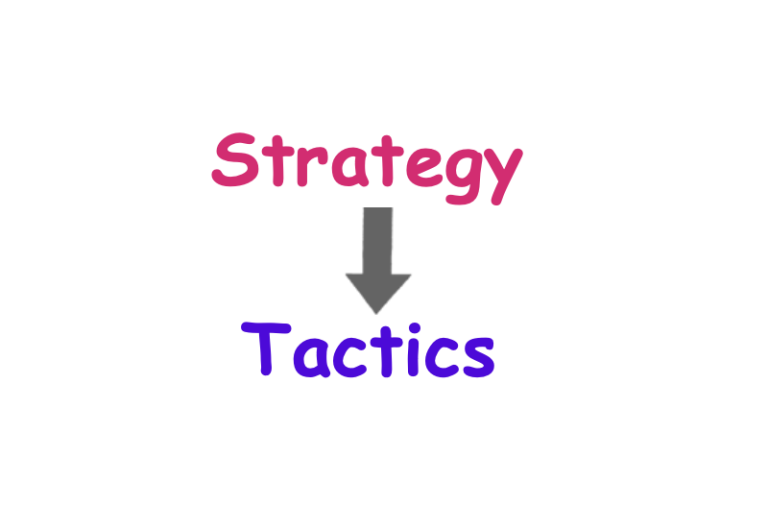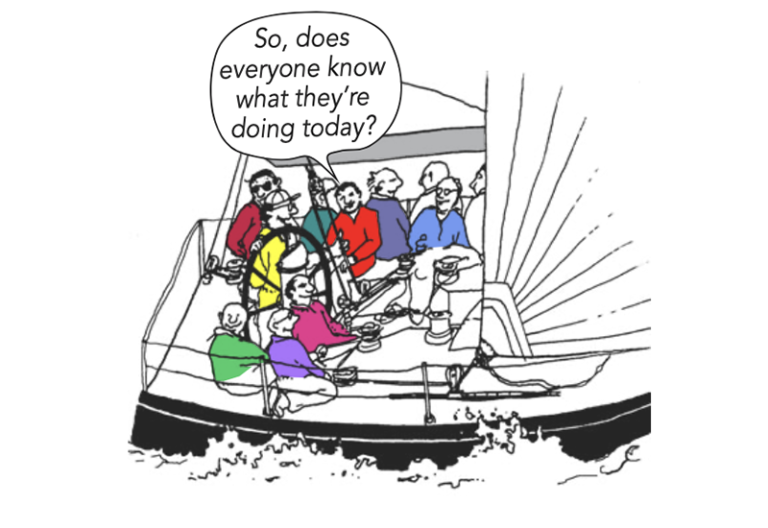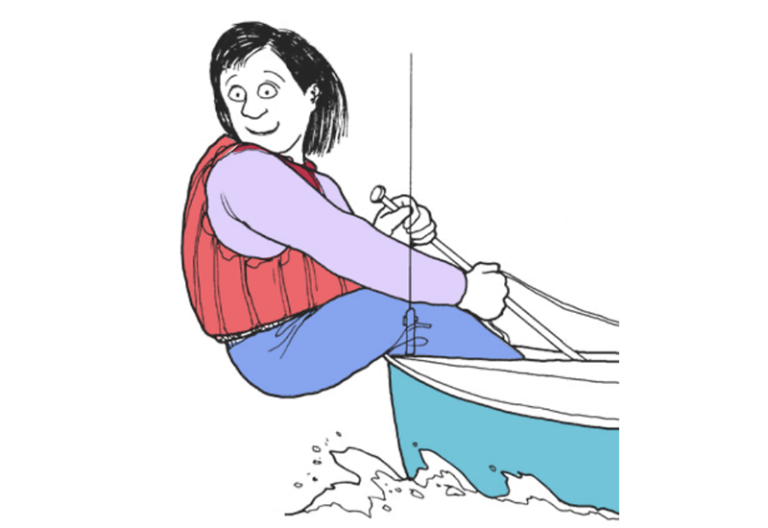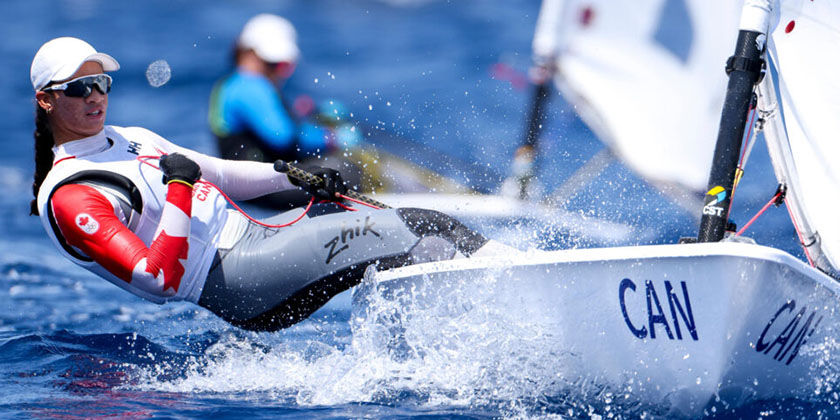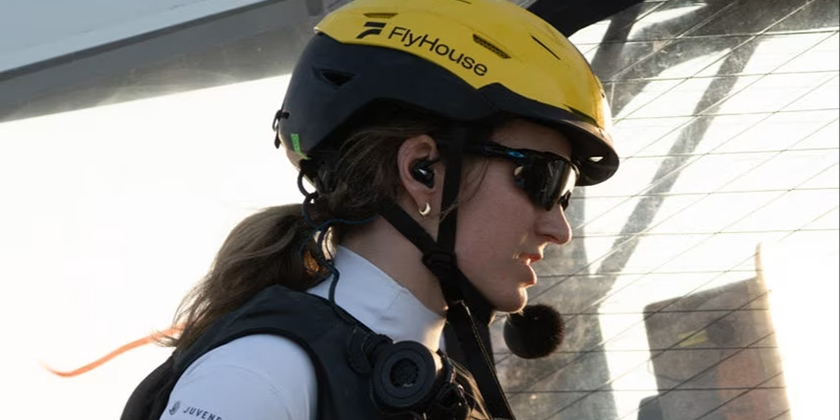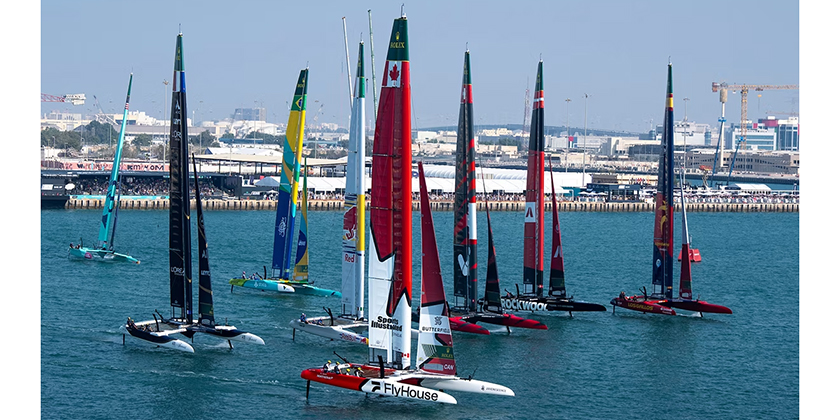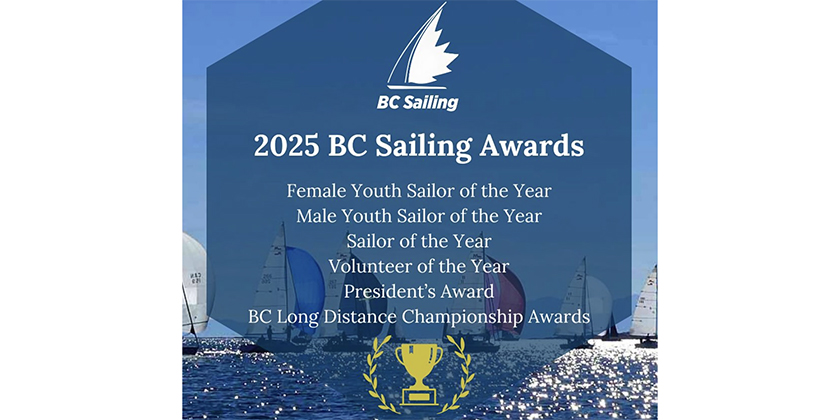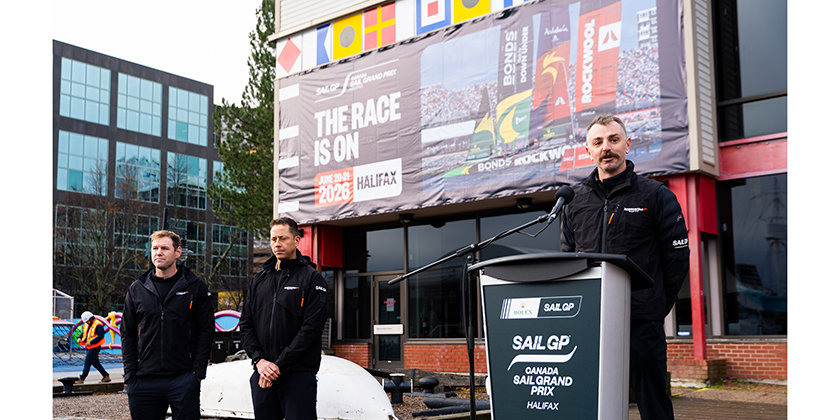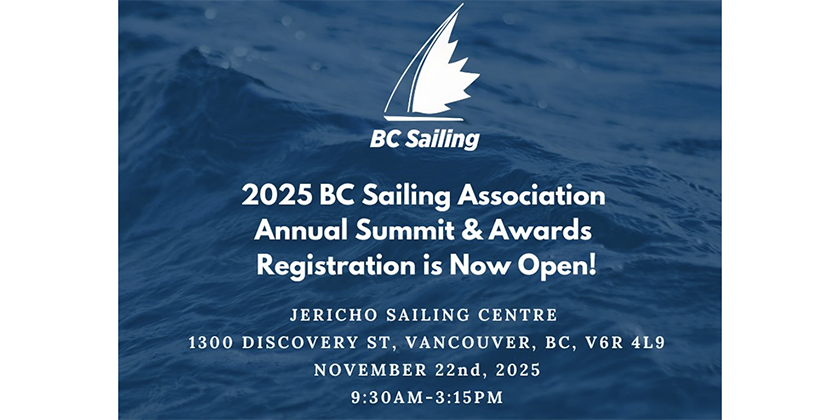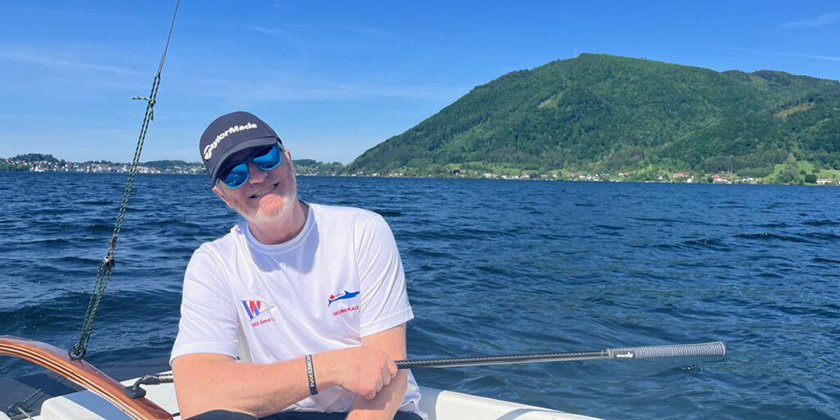Speed & Smarts: Familiar Layline Dilemmas
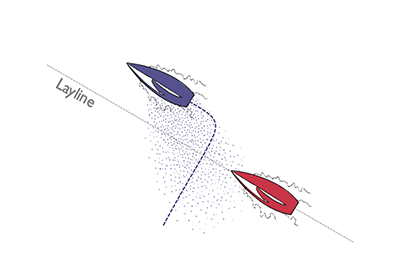
May 17, 2023
There are certain scenarios that always seem to play out when you get near a layline. Somebody tacks on you or you have the chance to tack on somebody. The wind shifts so you are no longer on the layline. You have to make a choice about whether to do two more tacks or sail straight, but slowly, toward the mark. In each of these situations, the decision you make usually has a significant consequence – it leads to big gains or big losses. And each dilemma is complicated by the fact that often, due to the nearby presence of other boats, you have to decide quickly.
Of course, the best way to resolve most of these common scenarios is to avoid them in the first place. But when that doesn’t happen, here are some thoughts on how best to handle them.
1. Make two tacks or continue in bad air?
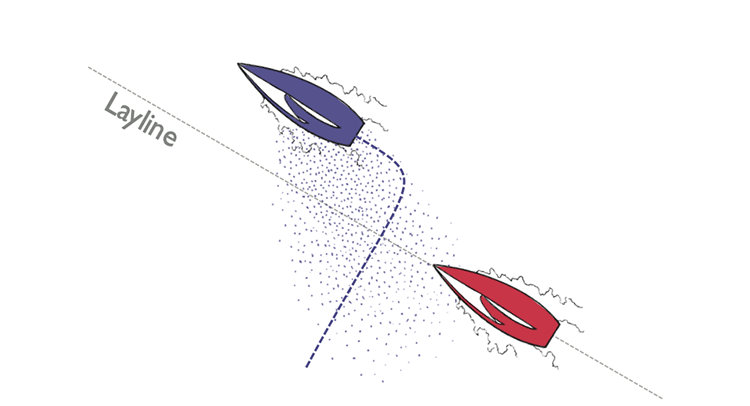
OK, you got to the layline a little earlier than you wanted and now a boat ahead of you has just planted a tack directly to windward. You can still lay the mark on starboard tack, even in bad air, but would it be better to tack twice and clear your wind?
The best solution to this dilemma depends primarily on how far you are from the mark. If you are very close to the mark you won’t lose as much by sailing in bad air as you would by tacking twice, so the choice is fairly easy. Likewise, if you are very far from the mark the distance you lose by tacking twice is probably small compared to what you’d lose by sitting in bad air all the way to the mark. Easy choice again.
It’s the middle distances where you face a tougher choice. See the chart for an interesting way to analyze this situation.
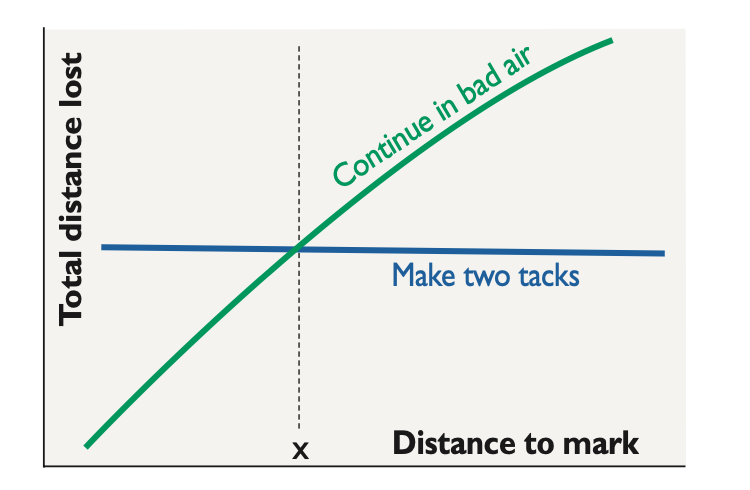
When you tack twice to clear your air, you will lose a certain distance to the rest of the fleet. For example, you might lose one length per tack for a total of two boatlengths. This distance lost will be the same no matter how far you are from the mark, so it is represented by a horizontal line above.
If you continue on the same tack you will also lose to the fleet, but the distance lost will vary by the amount of time you remain in bad air. For example, you might lose one length every 30 seconds. That is represented by the sloped green line above.
If you are X distance from the mark when the other boat tacks, the cost of two tacks will be roughly the same as staying in bad air. So, if your distance from the mark is greater than X, do two tacks; if it’s less than X, keep sailing in bad air. The trick is to figure out where X is for your boat in the existing conditions.
2. Take a lift or aim at the mark?
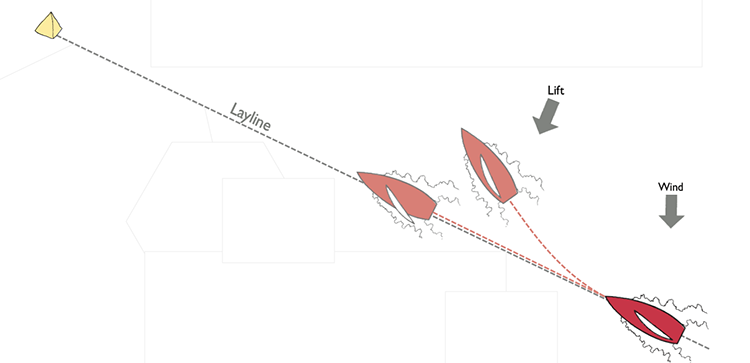
What should you do when you are on the layline pretty far from the mark and you get lifted? Should you take all the lift and put ‘money in the bank’? Take some of the lift and split the difference? Or go full speed straight at the mark?
Sometimes when you are on the layline and aiming right at the mark you get lifted. This is not bad because at least you’re still making the mark. But it calls for a decision: Should you ease sheets and keep sailing straight toward the mark, or head up with the lift to sail high of the mark?
The answer depends primarily on how far you are from the mark (and therefore how sure you are about what the wind will do before you reach the mark). If you knew that the lift was going to hold all the way to the mark, you would ease sheets and aim at the mark to sail the shortest distance.
Since you’re never certain about what the wind will do, you may have to sail a compromise. If you are quite close to the mark (with less chance the wind will shift before you get there), sail straight and fast to the mark. If you are very far from the mark (greater chance of a windshift), you should also sail straight to the mark. This will put you in the best shape for a header (‘sail toward the shift’) or a lift (you’ll have a faster angle to the mark than if you had sailed higher).
The middle distances are trickier. There is a range where you want to take some of the lift and sail higher to put some ‘money in the bank’ in case you get headed. This may not turn out to be the fastest way to get to the mark but think of it as ‘insurance’ to make sure you won’t have to make two more tacks.
3. Tack first or wait for the windward boat to tack?
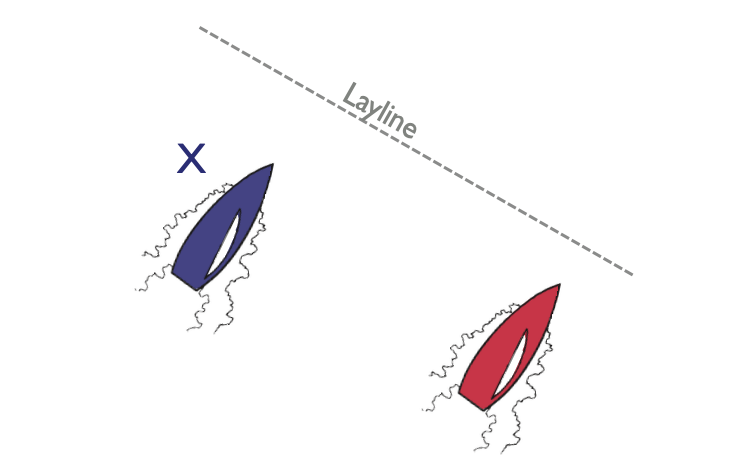
We’ve all been here before – sailing closer and closer to the layline, waiting for a boat (X) on our windward side to tack and feeling we have lost control. This dilemma seems to have two possible outcomes, both negative. We could tack first, but X would probably tack too (giving us a choice of bad air or two more tacks); or we could wait for X to tack, but then we would be overstanding the mark and losing to every other boat in the fleet.
The best solution is probably to rewind this scenario a bit and tack early. If you tack before X has any thought of being on the layline (but when she is close enough to the layline that she might not want to do two more tacks), you greatly reduce the chance that she will tack on you. If that opportunity is lost, tack first if you are fairly close to the mark or if it’s pretty windy (when being in bad air is not so slow). Wait for X to tack first when you are a long way from the mark or it’s light air (and bad air is very slow).
Follow the layline discussion in previous editions:
Yet more layline fun next issue!
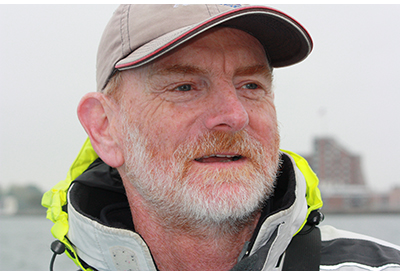 Dave Dellenbaugh is the publisher, editor and author of Speed & Smarts, the racing newsletter. He was the tactician and starting helmsman on America3 during her successful defense of the America’s Cup in 1992 and sailed in three other America’s Cup campaigns from 1986 to 2007. David is also two-time winner of the Canada’s Cup, a Lightning world champion, two-time Congressional Cup winner, seven-time Thistle national champion, three-time Prince of Wales U.S. match racing champion and past winner of the U.S. Team Racing Championship for the Hinman Trophy. He is currently a member of the US Sailing Racing Rules Committee (and was its chairman from 2005-2008).
Dave Dellenbaugh is the publisher, editor and author of Speed & Smarts, the racing newsletter. He was the tactician and starting helmsman on America3 during her successful defense of the America’s Cup in 1992 and sailed in three other America’s Cup campaigns from 1986 to 2007. David is also two-time winner of the Canada’s Cup, a Lightning world champion, two-time Congressional Cup winner, seven-time Thistle national champion, three-time Prince of Wales U.S. match racing champion and past winner of the U.S. Team Racing Championship for the Hinman Trophy. He is currently a member of the US Sailing Racing Rules Committee (and was its chairman from 2005-2008).
You can subscribe to the Speed & Smarts newsletter HERE.

